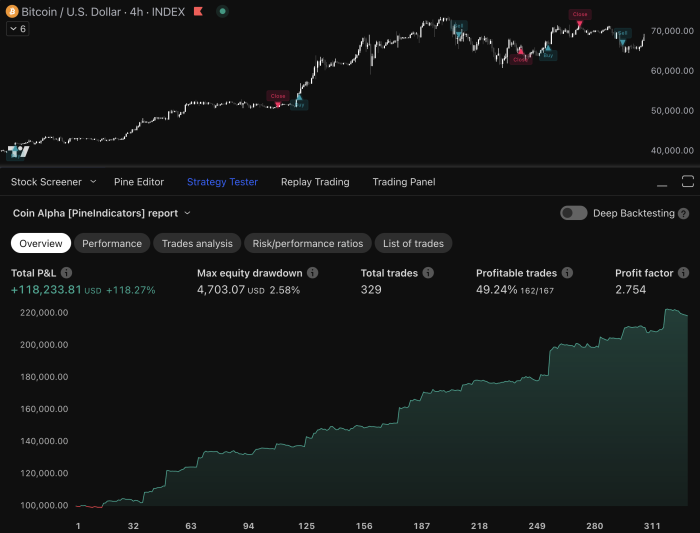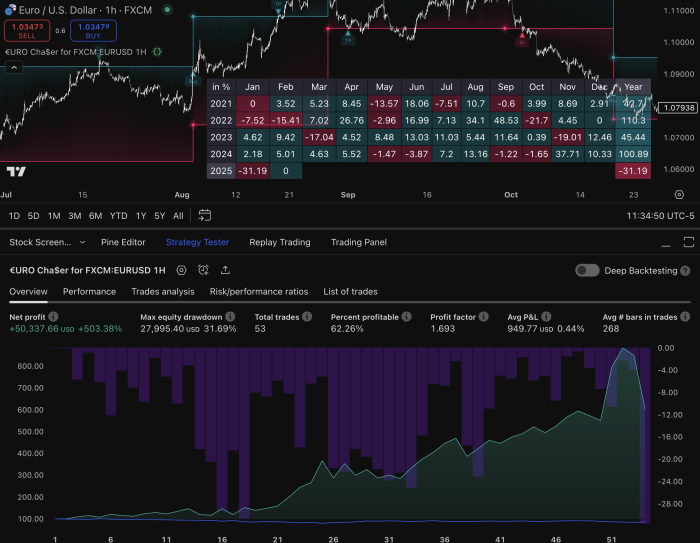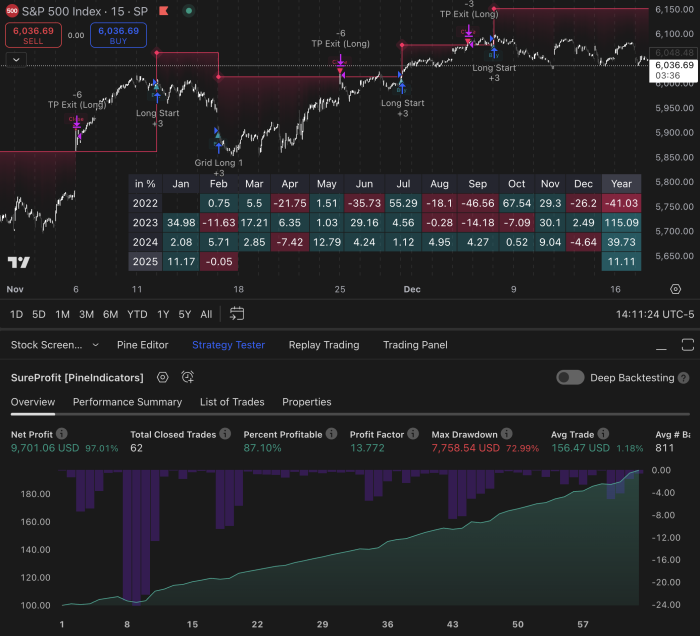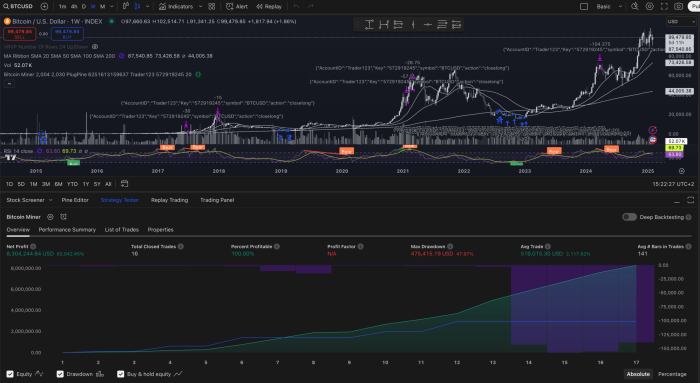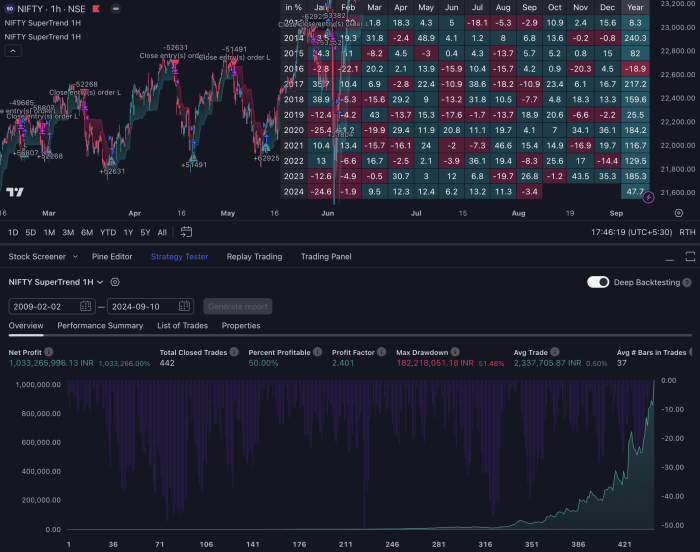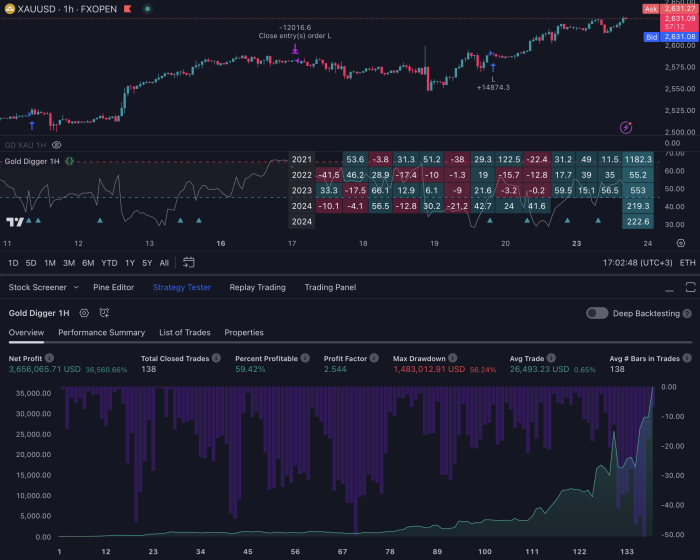Your success in the financial markets hinges on a well-crafted trading strategy. Even experienced traders can fall prey to common mistakes that erode their profits and derail their trading goals.
A solid trading strategy acts as your roadmap in the unpredictable world of trading. It defines your entry points, exit strategies, risk management rules, and position sizing – essential elements that protect your capital and maximize your potential returns.
This guide explores 10 critical trading strategy mistakes you need to avoid:
- Jumping into trades without a concrete plan
- Letting emotions drive your decisions
- Holding onto losing positions too long
- Risking too much on single trades
- Trading excessively
- Making FOMO-based decisions
- Skipping market research
- Relying solely on technology
- Ignoring risk-reward ratios
- Failing to track your performance
By understanding and avoiding these pitfalls, you’ll develop stronger trading habits and improve your chances of achieving consistent profitability in the markets.
To help you craft a more effective trading strategy, consider exploring some of the best TradingView strategies for successful trading.
If you’re new to using TradingView indicators, our buy guide for TradingView indicators can provide valuable insights.
For those looking to delve deeper into technical analysis, our advanced Pine Script tutorials offer comprehensive resources.
Additionally, if you’re interested in automating some aspects of your trading strategy, our collection of Pine Script templates could be beneficial.
Lastly, for Forex traders, we have specialized Forex indicator scripts for TradingView that can enhance your trading experience.
1. Lack of a Trading Plan
A trading plan serves as your personal blueprint for market success. Think of it as your business plan – without one, you’re essentially trading blind. A well-structured trading plan defines:
- Your specific trading goals
- Entry and exit criteria
- Position sizing rules
- Risk management parameters
- Time frames for trades
- Markets you’ll trade
Trading without a concrete plan often leads to:
- Random Decision Making: You’ll find yourself entering trades based on hunches rather than solid analysis
- Inconsistent Results: Your performance becomes unpredictable, making it impossible to identify what works
- Risk Management Issues: Without preset rules, you might risk too much on single trades
- Strategy Drift: You’ll likely jump between different approaches, never mastering any
Your trading plan should be detailed enough to answer the question: “If someone else followed this plan exactly, would they know precisely what to do?” This level of clarity eliminates guesswork and creates a systematic approach to your trading decisions.
To enhance your trading plan, consider incorporating effective strategies such as tradingview breakout strategies or the EMA crossover strategy using Pine Script. These strategies can provide a structured approach to entering and exiting trades.
Additionally, it’s crucial to backtest your strategies. Utilizing Pine Script for backtesting can help you understand the potential effectiveness of your trading plan before implementing it in real-time.
Lastly, staying updated with the best indicators for TradingView in 2024 can significantly improve your market analysis and overall trading performance.
2. Emotional Trading
Trading decisions driven by emotions can destroy even the most robust strategy. Fear and greed create a psychological tug-of-war that pushes traders into impulsive actions, deviating from their planned approach.
Common emotional trading scenarios include:
- Panic Selling: Dumping positions at a loss during market dips, only to watch prices recover shortly after
- FOMO Buying: Rushing into trades at market peaks due to fear of missing out
- Revenge Trading: Attempting to recover losses through aggressive, high-risk positions
- Overconfidence: Increasing position sizes after a winning streak
These emotional responses trigger a chain of poor decisions:
- Premature exit from profitable trades
- Holding losing positions too long
- Breaking risk management rules
- Ignoring technical analysis signals
Successful traders maintain objectivity by:
- Following pre-set entry and exit rules
- Using stop-loss orders consistently
- Taking regular breaks during high-stress periods
- Focusing on process rather than outcomes
A systematic approach helps eliminate emotional bias and maintain disciplined trading behavior. Trading platforms like TradingView offer tools to implement and automate your strategy, reducing the impact of emotional decision-making. For instance, you can explore custom indicator scripts for TradingView or utilize advanced strategies such as the Versatile Bollinger Band Cascade which is designed to elevate your trading experience. Additionally, there are high-profit trading strategies available that can further enhance your trading performance.
3. Failure to Cut Losses
Cutting losses is a critical skill that separates successful traders from those who struggle to maintain profitability. A common mistake traders make is holding onto losing positions, hoping the market will turn in their favor.
Effective stop-loss implementation strategies:
- Place stop-loss orders at key support/resistance levels
- Use trailing stops to protect profits as trades move in your favor
- Set maximum loss limits per trade (typically 1-2% of your trading capital)
Your stop-loss placement should reflect your analysis of where your trade idea becomes invalid. For example, if you’re buying a stock at a support level, your stop-loss should sit just below that support – if the price breaks below, your trading premise is no longer valid.
Trailing stops help you lock in profits while giving trades room to breathe. As the price moves in your favor, your stop-loss moves with it, maintaining a set distance from the current price. This technique protects your gains while allowing for natural market fluctuations.
To enhance your trading experience and implement effective stop-loss strategies, consider exploring some advanced Pine Script strategies that can help you with backtesting and risk management techniques on TradingView.
Additionally, employing best entry and exit strategies can significantly improve your trading performance.
Remember: The market doesn’t care about your emotions or your entry price. A small loss today preserves capital for better opportunities tomorrow.
4. Overexposure to Single Trade or Market
Position sizing plays a critical role in protecting your trading account from excessive risk exposure. Many traders make the mistake of allocating too much capital to a single trade or focusing exclusively on one market.
Key Risk Factors:
- Market volatility can lead to substantial losses when position sizes are too large
- Concentrated exposure limits diversification benefits
- Single-market focus increases vulnerability to sector-specific downturns
A balanced approach to position sizing typically involves:
- Limiting individual trade risk to 1-2% of total account size
- Spreading capital across multiple uncorrelated markets
- Adjusting position sizes based on market volatility
For instance, if a trader with a $10,000 account risks 20% on a single cryptocurrency trade, a sudden 10% market drop would result in a $2,000 loss – a significant blow to the account’s sustainability. To avoid such scenarios, it’s crucial to adopt effective buy crypto strategies for trading, which can help mitigate risks associated with overexposure.
Practical Risk Management:
- Calculate position sizes before entering trades
- Use a position size calculator to maintain consistent risk levels
- Monitor total exposure across related markets
- Reduce position sizes during high-volatility periods
Moreover, leveraging TradingView Pine Script can enhance your trading strategy by providing advanced tools for analysis and execution. For those new to this scripting language, resources like Pine Script for beginners can be invaluable in getting started.
5. Overtrading
Overtrading occurs when traders execute excessive transactions without valid market signals or strategic justification. This common mistake can rapidly deplete your trading account through accumulated transaction costs, commissions, and spreads.
Key Signs of Overtrading:
- Taking trades outside your defined strategy parameters
- Opening multiple positions within short time frames
- Trading during low-liquidity market conditions
- Feeling anxious when not actively trading
- Increasing position sizes to recover losses
The psychological drive behind overtrading often stems from a desire to make up for losses or catch every market move. This behavior typically leads to poor decision-making and reduced profitability.
To prevent overtrading, consider implementing some strategies such as setting daily trade limits, defining specific entry criteria, or even following a disciplined approach that helps maintain focus on quality trade setups. You might also want to track your trading frequency using tools like the TradingView Strategy Tester and stick to your predetermined trading schedule.
However, if you find yourself struggling with this issue, it’s crucial to understand how to stop overtrading effectively. You can explore some actionable insights on this subject in this comprehensive guide on how to stop overtrading.
6. Chasing Performance
Chasing performance ranks among the most destructive trading behaviors. You spot a stock that’s risen 20% in a week, and your instinct screams “buy now before it’s too late!” This FOMO-driven decision making often leads to buying at peak prices and selling at market bottoms.
Past performance doesn’t guarantee future results. A stock’s previous success can create a false sense of security, masking potential risks and market shifts. Consider Bitcoin’s 2021 surge to $69,000 – traders who jumped in at the peak faced significant losses when the market reversed.
Key signs you’re falling into the performance chasing trap:
- Buying assets solely because they’ve recently outperformed
- Making snap decisions based on social media hype
- Increasing position sizes after a string of winning trades
- Ignoring fundamental analysis in favor of price momentum
The antidote to performance chasing lies in disciplined analysis. Before entering any trade, examine:
- Current market conditions
- Asset fundamentals
- Technical indicators
- Risk-reward ratios
- Your personal risk tolerance
Remember: successful trading requires patience and thorough analysis, not reactive decisions based on market excitement. Utilizing tools such as Pine Script strategies for TradingView can greatly enhance your trading with custom indicators and effective techniques.
7. Ignoring Market Research
Market research is the key to making smart trading decisions. To really understand what’s happening in the market, you need to look at both the big picture (fundamental analysis) and the specific details (technical indicators).
Essential Research Components:
- Keep an eye on economic calendars for important updates like GDP growth, employment figures, and interest rate changes.
- Dive into company earnings reports and financial statements to get a sense of how individual businesses are performing.
- Look at how different industries are doing and spot any trends that could impact your trades.
- Study technical chart patterns and pay attention to what indicators are telling you about price movements.
- Understand how market sentiment (the overall feeling or mood of investors) can influence prices.
- Consider volume (the number of shares traded) and volatility (how much prices fluctuate) as additional factors in your analysis.
Successful traders know that relying on just one piece of information is risky. Instead, they gather multiple research elements to confirm their trading decisions. For example, if a stock’s price breaks out of a certain level, it’s even more significant if there’s also high trading volume and positive performance in the sector it belongs to.
News events can have a big impact on the market, so it’s important to stay updated about scheduled economic releases. These events can sometimes cause prices to move dramatically, so being aware of them can help you make better trading choices.
To assist with your research, you can use tools like TradingView which provide access to various technical indicators and real-time market data. Additionally, consider setting up news alerts specifically for the assets you trade. This way, you’ll be notified whenever there’s relevant news that could affect your positions.
Remember, successful trading requires a systematic approach. Make it a habit to regularly analyze market conditions based on the research components mentioned above. By doing so, you’ll be able to identify potential trade opportunities with higher probabilities while avoiding impulsive decisions driven by incomplete information.
8. Over-reliance on Technology or Trading Software Alone Without Understanding Market Mechanics Behind It All!
Trading software and automated systems, such as those that use automated Pine Script strategies, have transformed the way we trade. These tools offer powerful features like:
- Real-time market data analysis
- Automated trade execution
- Complex pattern recognition
- Back-testing capabilities
- Risk management automation
However, blindly relying on technology without understanding the basic principles of the market can result in significant losses. Trading software should be seen as a tool to improve your strategy, not a substitute for your understanding of the market.
Many traders make the mistake of viewing trading software as a “black box” solution. They enter parameters without comprehending the underlying market mechanics that influence price movements. This mindset can be risky when:
- Market conditions change unexpectedly
- Software bugs or glitches occur
- Network connectivity issues arise
- Algorithm-based trades conflict with fundamental factors
The Key Balance
Successful traders utilize technology to:
- Streamline their execution process
- Validate their market analysis
- Enhance their decision-making
While also having a strong understanding of:
- Price action principles
- Market psychology
- Economic indicators
- Risk management fundamentals
9. Poor Risk Management Practices Like Not Considering Appropriate Risk-Reward Ratios When Planning Trades
Risk-reward ratios are crucial for profitable trading strategies. A 1:2 risk-reward ratio means you’re risking $1 to potentially gain $2 – this mathematical approach helps create consistent profits even with a lower win rate.
Many traders make the mistake of taking trades with unfavorable risk-reward ratios, such as risking $2 to make $1. This practice requires an unrealistically high win rate to maintain profitability.
Common Risk Management Mistakes:
- Setting stop losses too tight while having distant profit targets
- Taking trades without clearly defined exit points
- Using excessive leverage to compensate for small position sizes
Real-World Example:
A trader risks 10% of their account on a single trade with 10x leverage. A mere 10% move against their position would wipe out their entire account. A safer approach would limit risk to 1-2% per trade with reasonable leverage levels.
Your trading strategy should include position sizing calculations based on:
- Account size
- Market volatility
- Current market conditions
- Personal risk tolerance
Proper risk management goes beyond individual trades – it covers your entire trading portfolio and helps protect capital during difficult market times.
10. Not Keeping a Detailed Trading Journal
A trading journal is like your personal database for the market, where you record important insights that influence your growth as a trader. Unfortunately, many traders overlook this essential practice and miss out on valuable lessons they could learn from both their victories and defeats.
What to Include in Your Trading Journal
Your trading journal should contain the following information:
- Entry and exit points with clear reasoning
- Market conditions during the trade
- Emotional state and decision-making process
- Risk management decisions made
- Profit/loss outcomes and position sizing
Why Tracking These Elements Matters
By keeping track of these aspects, you can:
- Identify recurring patterns in successful trades
- Spot emotional triggers affecting your decisions
- Refine your strategy based on actual results
- Build confidence through documented successes
The Importance of Regular Review
Professional traders understand the significance of reviewing their journals regularly. They dedicate time each week to analyze their trades, looking for areas where they can improve. This practice allows them to stay accountable and make necessary adjustments to their strategies.
Tools to Simplify Journaling
If you’re looking for ways to streamline your journaling process, consider using tools like TradingView’s built-in notes feature. This platform allows you to annotate charts and document your trading journey directly on its interface, making it easier for you to keep track of your progress.
Remember: Your trading journal transforms mistakes into stepping stones for growth. Each documented trade adds to your knowledge base, helping you avoid repeating costly errors.
FAQs (Frequently Asked Questions)
Why is having a solid trading strategy important in financial markets?
A solid trading strategy is crucial for achieving success in financial markets as it helps traders to make informed decisions, manage risks effectively, and maintain consistency. Recognizing and avoiding common trading strategy mistakes is essential for long-term profitability.
What are the consequences of trading without a plan?
Trading without a well-defined plan can lead to emotional decision-making and inconsistent results. Traders may find themselves making impulsive trades based on emotions rather than following a structured approach that outlines their goals, strategies, and risk management rules.
How can emotional trading impact my performance?
Emotional trading can significantly affect decision-making by leading to impulsive actions such as panic buying or selling. These behaviors often deviate from a trader’s established strategy, resulting in poor timing and potential losses.
What strategies can I use to effectively cut losses?
To protect your capital and avoid larger drawdowns, it’s important to cut losses promptly. Implementing stop-loss orders at key support or resistance levels and using trailing stops are effective strategies for managing risk and ensuring timely exits from losing trades.
What are the risks associated with overexposure to a single trade or market?
Overexposing yourself to a single trade or market increases volatility and the potential for significant losses. Understanding position sizing is essential for managing risk across multiple trades or markets, helping to mitigate the impact of adverse movements.
Why should I keep a detailed trading journal?
Maintaining a detailed trading journal is vital for tracking performance and learning from past mistakes. It allows traders to analyze individual trades and broader patterns observed during live market conditions, leading to improved strategies and better decision-making over time.

